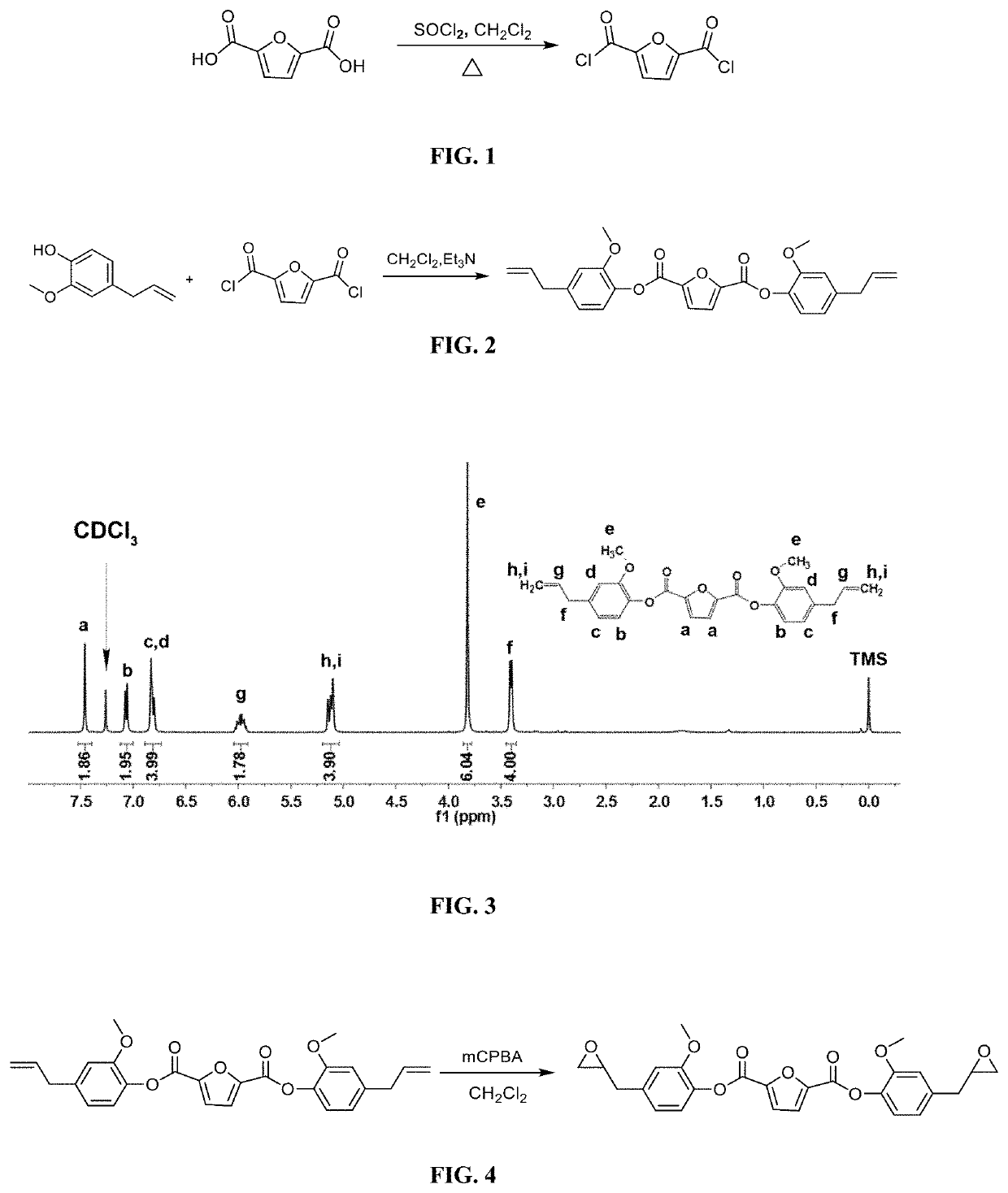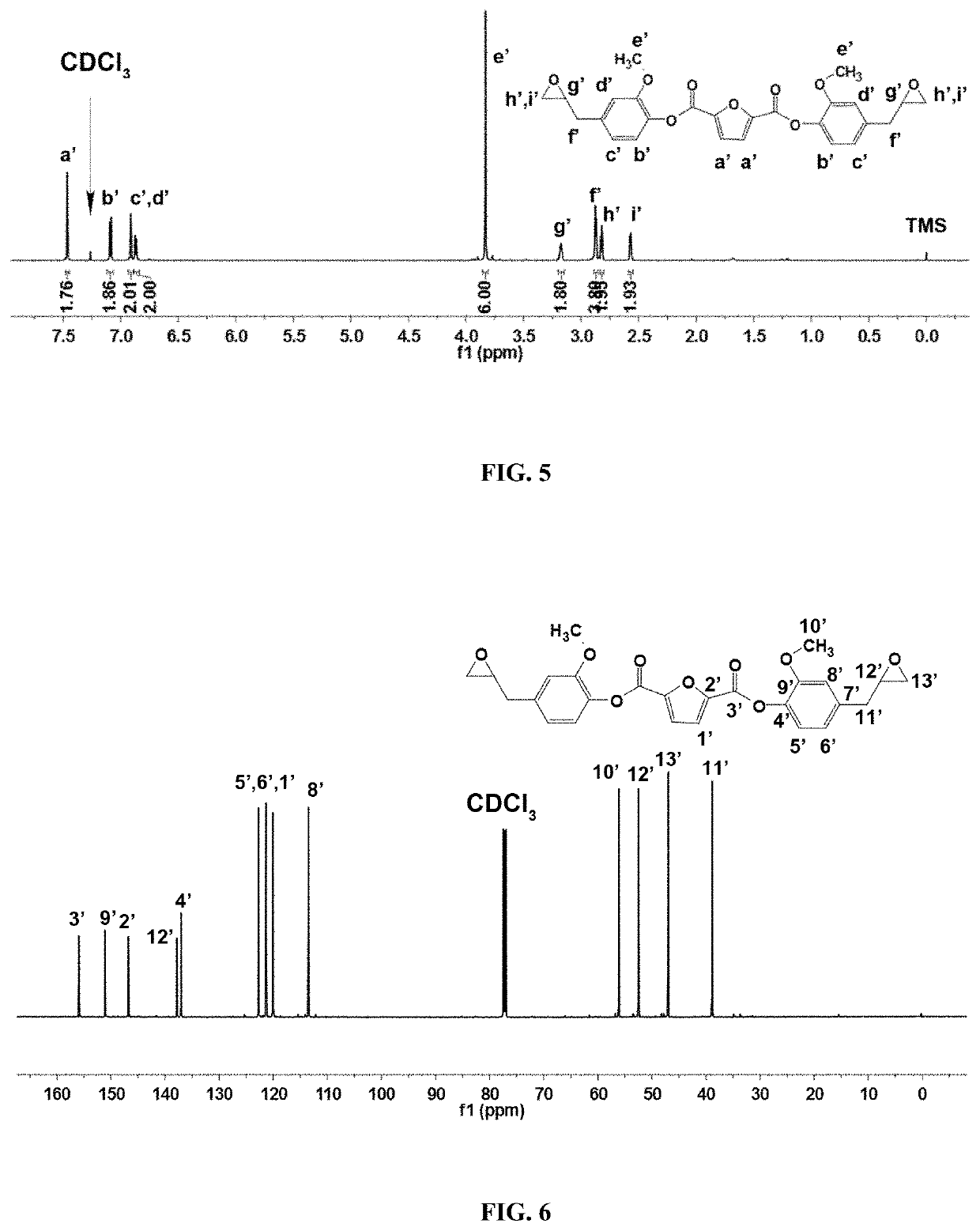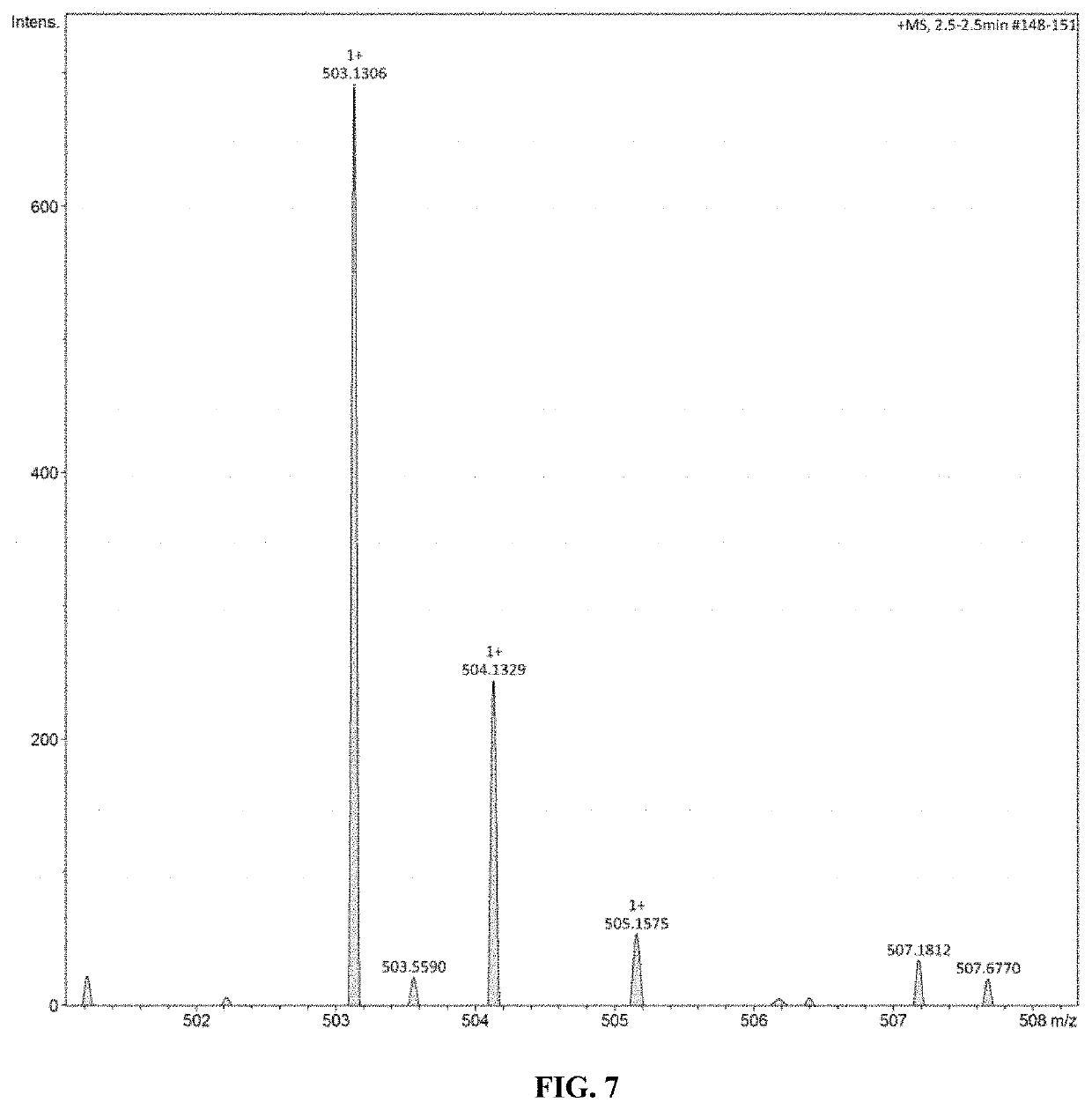Biomass-based epoxy resin and preparation method thereof
a biomass-based epoxy and resin technology, applied in the field of biomass-based epoxy resin, can solve the problems of few studies on biomass thermosetting resins, inefficient utilization, and serious challenges in the petroleum chemical industry, and achieve excellent thermal and mechanical properties, simple preparation process, and good processing controllability.
- Summary
- Abstract
- Description
- Claims
- Application Information
AI Technical Summary
Benefits of technology
Problems solved by technology
Method used
Image
Examples
example 1
[0029]1) Synthesis of 2,5-Furan Dicarboxylic Acid Chloride
[0030]31.20 g 2,5-Furandicarboxylic acid, 35.69 g thionyl chloride and N,N-dimethylformamide (DMF, catalyst, 0.05 mL) are mixed; the reaction is carried out for 3 h at 80° C. with stirring, and then the mixture is naturally cooled to room temperature. After removing the thionyl chloride under reduced pressure and drying, 2,5-furan dicarboxylic acid chloride is obtained.
[0031]As shown in FIG. 1, it gives the synthesis reaction formula of 2,5-furan dicarboxylic acid chloride of this invention;
[0032]2) Synthesis of Fully Biobased bis(4-allyl-2-methoxyphenyl)furan-2,5-dicarboxylate
[0033]31.20 g Eugenol and 24.29 g triethylamine acting as base are dissolved in 200 mL dichloromethane to make solution A; at the temperature ranging from −5 to 0° C., 2,5-furan dicarboxylic acid chloride (19.30 g) is dissolved in 200 mL dichloromethane to get 2,5-furan dicarboxylic acid chloride solution, which is then slowly dropped into solution A; A...
example 2
[0049]1) Synthesis of 2,5-Furan Dicarboxylic Acid Chloride
[0050]31.20 g 2,5-Furandicarboxylic acid, 35.69 g thionyl chloride and N,N-dimethylformamide (DMF, catalyst, 0.05 mL) are mixed; the reaction is carried out for 3 h at 80° C. with stirring, and then the mixture is naturally cooled to room temperature. After removing the thionyl chloride under reduced pressure and drying, 2,5-furan dicarboxylic acid chloride is obtained.
[0051]2) Synthesis of Fully Biobased bis(4-allyl-2-methoxyphenyl)furan-2,5-dicarboxylate
[0052]32.84 g Eugenol and 27.33 g triethylamine acting as base are dissolved in 300 mL dichloromethane to make solution A; at the temperature range of −2.5±1° C., 2,5-furan dicarboxylic acid chloride (19.30 g) is dissolved in 300 mL dichloromethane solution to get 2,5-furan dicarboxylic acid chloride solution, which is then slowly dropped into solution A; After dropwise addition is completed, the reaction solution is slowly heated and maintained at 20° C. for 3 h; after the ...
example 3
[0055]1) Synthesis of 2,5-Furan Dicarboxylic Acid Chloride
[0056]31.20 g 2,5-Furandicarboxylic acid, 35.69 g thionyl chloride and N,N-dimethylformamide (DMF, catalyst, 0.05 mL) are mixed; the reaction is carried out for 3 h at 70° C. with stirring, and then the mixture is naturally cooled to room temperature. After removing the thionyl chloride under reduced pressure and drying, 2,5-furan dicarboxylic acid chloride is obtained.
[0057]2) Synthesis of Fully Biobased bis(4-allyl-2-methoxyphenyl)furan-2,5-dicarboxylate
[0058]34.48 g Eugenol and 30.36 g triethylamine acting as base are dissolved in 500 mL dichloromethane to make solution A; at the temperature range of −1±1° C., 2,5-furan dicarboxylic acid chloride (19.30 g) is dissolved in 500 mL dichloromethane solution to get 2,5-furan dicarboxylic acid chloride solution, which is then slowly dropped into solution A; After dropwise addition is completed, the reaction solution is slowly heated and maintained at 20° C. for 2 h; after the re...
PUM
| Property | Measurement | Unit |
|---|---|---|
| Temperature | aaaaa | aaaaa |
| Temperature | aaaaa | aaaaa |
| Temperature | aaaaa | aaaaa |
Abstract
Description
Claims
Application Information
 Login to View More
Login to View More - R&D
- Intellectual Property
- Life Sciences
- Materials
- Tech Scout
- Unparalleled Data Quality
- Higher Quality Content
- 60% Fewer Hallucinations
Browse by: Latest US Patents, China's latest patents, Technical Efficacy Thesaurus, Application Domain, Technology Topic, Popular Technical Reports.
© 2025 PatSnap. All rights reserved.Legal|Privacy policy|Modern Slavery Act Transparency Statement|Sitemap|About US| Contact US: help@patsnap.com



